Personalized Learning as a Curricular Design
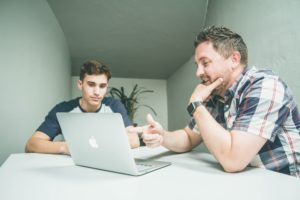
Photo by NeONBRAND on Unsplash
The premise behind individualized/personalized learning has been a driving force in my teaching for many years. I am a small rural school’s computer science teacher, and that leaves everything related to a computer under my purview. My class ranges from programming to computer design and from digital music to movie creation, all at the same time, in the same room. Therefore, stand and deliver is not an option and I am required to look at the best way to engage all. Though my classes and learning is going well, I know I can enhance my teaching practice. I am constantly reflecting upon this process to make sure all student’s needs are being met. This refinement is based on the ideas that each student has a say in their learning. This collaborative, yet personalized process, is a messy minefield that I question daily. I look at the students and can’t help but think the non-defined conclusion of personalized learning is antithetical to the way I was taught.
I am anchoring myself, every time I reflect, on the notion that what the students are learning is based on their goals and interests. To be honest, when I first tried this method, I had to fight my predetermined idea of what education was, based on my experience. If all students in my class of 30 are doing something different, is there any proof that the daily output is meeting this mythical standard I had in my mind; a standard that was cultivated when I was in school and was achieved by handing in a completed worksheet, or finishing the assigned questions? The more I research and the more I look at student engagement and finished product; I realize that none of these learning evidence pieces would exist if they were doing only what I prescribed. The question is, why is it so hard for me to practice what I truly believe will work for all, over what I know works for only some? Is my need for control worth more than their learning and expression?
Dumont, Istance, and Benavides (2010) discussed a socio-constructivist curricular paradigm looking at the role of personalized learning as integral to create adaptive minds that are flexible and creative. That is to say, the situation drives the answer, not the other way around. These authors state, “In order to support the progressive acquisition of adaptive expertise… [t]he teacher should leave open opportunities for ‘expressive outcomes’ – unanticipated results from the learning that takes place” (Dumont et.al, 2010, p. 4). The idea of pre-determined, form-fitting education as lacking real-world validity is echoed by other scholars.
Paul France (2020) was not shy at discussing the failings of standardized, impersonal curriculum. France states, “it’s clear that one-size-fits-all curriculum isn’t quite making the cut. As a result, the standardization movement has been met with a new movement: one that values differentiation, individualization, and personalization” (2020, p. 8). The premise of prescription over exploration creates a funnel that only allows for a predetermined set of outcomes to come to pass. France (2020), like Dumont et al. (2010), points out that executive function and flexibility is core to the goals of the curriculum when he states,
To create classrooms and schools that are fair, impartial, and equitable, we must remember that students need much more than appropriate academic content to reach their full potential. They need explicit instruction in executive functioning skills; they need to cultivate self-awareness, agency, and autonomy; and above all else, students need access and inclusion. (France, 2020, p.18)
These tenets are core in our curriculum documents in BC. Examples of these curricular tenets are, “[p]ersonal design choices require self-exploration and refinement of skills”, and “[t]ake creative risks in generating ideas and add to others’ ideas in ways that enhance them” (“Media design 10 | Building student success,” n.d.). With the latitude we are afforded as educators, we should endeavour to educate the whole student.
In conclusion, the more I read on the topic, and the more I practice personalized learning, leads me to feel validated in the efficacy of the curricular idea, but also feeling challenged to make sure that all learners are being reached and able to express their learning. I know there are areas I can, and must, improve in terms of both learner conferencing and goal creation, to name a few. I am actively trying new techniques, and adapting them to my whole classroom situation and the learners individually. Furthermore, it is hard to break the lessons of our past. The way I learned was successful for me, therefore that is how a class should look in my eyes. However, acknowledging that the way I learned as a youth is not functional to all, thus creating an equity gap in my class, is the unintended result if I am not willing to adapt. I have been using the personalized/individual approach for years, and the few failures I have seen thus far are more on my lack of conviction in the process, leading to only limited implementation. Once there is a solid scaffold, I have found the less the reigns are controlling the learner, the possibilities for the creation of the executive functions, needed in all life settings, are realized.
References
Dumont, H., D. Istance and F. Benavides (eds.) (2010), The Nature of Learning: Using Research to Inspire Practice, Educational Research and Innovation, OECD Publishing, Paris, https://doi-org.ezproxy.library.uvic.ca/10.1787/9789264086487-en.
France, P. (2020). Reclaiming personalized learning Thousand Oaks, CA: Corwin doi: 10.4135/9781544360652
Media design 10 | Building student success. (n.d.). Retrieved from https://curriculum.gov.bc.ca/curriculum/adst/10/media-design
Accessibility: Barriers We Create.
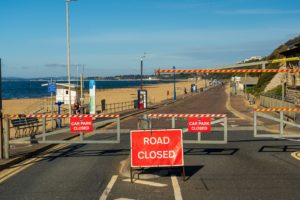
Photo by Nick Fewings on Unsplash
Accessibility is a word that has so many contexts depending on the area you are applying it to. Accommodations are the way that we, as a society or business, adapt to make sure that people of all abilities have the same opportunities. This week in class, led by Kim Ashbourne, we were discussing accessibility and there was a clear common thread from our cohort, “we don’t know, what we don’t know”. That statement is very true.
We, as educators, are used to adaptations to meet the unique needs of our students. However, do we adapt for the good of all without the drive to meet a certain student’s needs? After the class where we talked about adaptations, I started to see accessibility everywhere. I was watching a discourse between Dr. Fauci and Georgetown University and I could see the accessible nature of closed captioning (which I never noticed because I didn’t need it), Zoom instead of in person etc. I never thought of those things as I have never had to.
However, I had adaptations made for me by my school district after I had emergency hand surgery so I could continue to work teaching computers. I had lost the use of my left hand for more than 5 months. The big adaptation was a voice to text program called Dragon Speak. I had never heard of this program before, and may never have heard of it if I didn’t need an adaption or had a future student who would need it.
My master’s group is creating a website that has video we produced and other mediums of expressing the purpose and execution of our project. We are getting better with adding CC and Creative Commons licences, however, there are areas in which we can continue to improve to make sure it is accessible to all.
I am moving to the question, how can I make my classes more accessible? How can I adapt my teaching to reach more students not because an IEP says I need to, but because learning needs me to?
EDCI 572- Revealing the Story: Editing for Communication
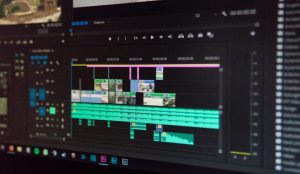
Photo by Wahid Khene on Unsplash
To reflect on the past weeks would be a huge task. I miss the students and I love the team I work with. FSJSS has come together to help each other and support the learning of the students and each other. I have been helping a lot with the tech aspects of the new paradigm we are in and have also spent a great deal of time editing. I decided that this week’s blog would be on 2 editing software choices and when/why I use each. They are Adobe Premiere and Movie Maker.
The BC Digital Literacies and the International Society for Technology in Education (ISTE) digital literacies are well represented in both types of software.
EDCI 572- Equity of Access.

Photo by Alexander Sinn on Unsplash
It is hard to find the drive to write a post this week. I am on spring break and I should be relaxing, but I can’t get this out of my head. I was going to make a post on the basics of Adobe Premiere, but I have no access to this software at my house and therefore cannot screen capture the video. That got me thinking, how will I teach computers from home? Furthermore, how do I teach computers to learners who don’t have internet, or computers, at their house? I have realized that it is easy to take for granted the things we have, and it is only at a time like this do we see the issues many face around us.
The software adaptations are easy and the lessons would be based on the software the students would have access to, using their Microsoft school district accounts. I would have to retool what is taught to be based around that software only and not the Adobe suite that I, and my students, are used to learning. Overall, this adaptation is not hard. However, that does not solve the problem of accessibility to all learners. There is equity to think about. Though I don’t know how I am going to combat this issue, I am comforted to know that with our late spring break, this affords other districts to tackle that issue and come to some solutions that I can adapt to my own practice.
Though my class, while in the school, is based on individualized, self-paced, open learning, I would have to adapt and so will they. This will allow me to renew my understanding of certain, attainable software and expand my arsenal of learning for the students.
As for the school, I am thinking, with administration consent, I will start a school youtube channel where teachers can have their own playlist. That way they can screen record their lessons and load them onto the channel for the students to use and learn from. This will afford them to have access to their teachers and learn from them. Though this again does not answer the equity of access issue.
So here I am, sitting at this laptop, thinking of ways to close that chasm. I find it hard to visualize what form my content and teaching will take, but that is part of the challenge. Maybe, this will add new ways for me to reach learners. Maybe, this will force me to redefine my pedagogy. Maybe, I will just be spinning my wheels. I am unsure as to what the next few months will mean for the education system and how we teach at this time. However, until we answer this in a way in which I can reach all my learners, not just the privileged, there is little light at the end of the tunnel.
EDCI 572- Transforming the Conveyance of Learning.

Photo by Priscilla Du Preez on Unsplash
The medium of my day was written. The way that we showed we understood/learned, was by completing a test or write a paper. That was it. It was less about empowerment and more about being an automaton. In the rare class, we would do an oral presentation. Those times have changed.
In class this week, we heard from Tim Winkelmans. He discussed the creation, and importance, of the BC Digital Literacy Framework within the education system of BC. I can’t agree more with the creation of this framework, though as my job is teaching technology, I may be biased. Having heard about the International Society for Technology in Education (ISTE), during the meeting, I dug deeper into the ideals of this society. I feel it is nothing but a validation of how myself, and my fellow teachers at my school, are trying to increase our digital literacy to better empower our students. Though we are yet to meet all these standards, we are working to improve our abilities to incorporate more in our practice and, in turn, create more independent, adaptable, resilient, and multi-faceted students. In this blog, I want to concentrate on the empowered learner from both the BC Digital Literacy Framework and the ISTE Framework. Though the two are similar, it is interesting to see where the ISTE framework is more rigorous in terms of a student growth mindset.
The ISTE site describes the empowered learner as:
1a- Students articulate and set personal learning goals, develop strategies leveraging technology to achieve them and reflect on the learning process itself to improve learning outcomes.
1b- Students build networks and customize their learning environments in ways that support the learning process.
1c- Students use technology to seek feedback that informs and improves their practise and to demonstrate their learning in a variety of ways.
1d- Students understand the fundamental concepts of technology operations, demonstrate the ability to choose, use and troubleshoot current technologies and are able to transfer their knowledge to explore emerging technologies. (“ISTE Standards for Students,” n.d.)
See Chart created by Deirdre Houghton, Gary Soles, and I, displaying the BC digital Literacy outcomes the students will be meeting, below:
| BC Digital Literacy Framework | Learning Outcome | Student Activity |
| Research and Information Literacy |
|
|
| Critical Thinking, Problem Solving, and Decision Making |
|
|
| Creativity and Innovation |
|
|
| Digital Citizenship |
|
|
| Communication and Collaboration |
|
|
| Technology Operations and Concepts |
|
|
In the master’s project that Deirdre, Gary, and I are aiming to create, we will be looking at cross-curricular inquiry, incorporating both theoretical and experiential outcomes. The students will have access to many technologies and classrooms to complete this project. The finished project is pre-designed as an outline, but the portion that the students are creating will be individual and representative of both their learning and the area that resonated with them. This, we hope, creates ownership and empowerment.
These standards mentioned above (both the BC Digital Literacy, and the ISTE framework), are the impetus for the expression of students learning. If a student is able to display their learning using the digital tools available to them, they tend to dig deeper into the process of learning, and not just make the pre-defined product that concentrates more on the result, than on the journey. In our school, the teachers who do inquiry, send learners to my lab to create different representations of their essential questions. The use of slideshows, movies, photography with voice over, photoshop representations, and others, affords the learners to not only realize they have an interest in technology but that the technology can help them realize their voice. Most importantly, they have to visualize what they want their presentation to look like and then learn how to make that a reality. This creates perseverance and troubleshooting skills that are essential to future life experiences.
Attached is a video series explaining the digital literacy we have created using OBS to showcase what the Aspire Software looks like:
References
Digital Literacy. (n.d.). Retrieved from https://www2.gov.bc.ca/gov/content/education-training/k-12/teach/teaching-tools/digital-literacy
ISTE Standards for Students. (n.d.). Retrieved from https://www.iste.org/standards/for-students
Andrew Vogelsang
EDCI 572-Documentary Creation part 1: Mental Planning

Photo by Trent Szmolnik on Unsplash
When considering the blogs and reflections for this course, I found myself wondering what I should focus on. Is it the new tech I am learning? The full details of the tech I use to make digital stories? There are so many options that I found myself flip-flopping on the best method. I have decided that my blogs for this class are going to be based on the journey of creating our final group project for this course. I am going to take a deep dive into how we as a group; plan, storyboard, record, edit, and polish the film. In this case, the course project is going to be an introductory mini-documentary for our group’s final MEd project on Truth and Reconciliation.
Mental planning, pre-storyboard.
The first step is to decide the length and what we need in it. The length is key, as we do not want it so long as to dilute the message; nor too short and leave a lack of clarity. We as a group have decided on 7-10 min (that is not as much time as you think). Next, you have to decide what is included to tell the story. We have decided ours will contain interviews, music, and b-roll footage as a visual enhancer. After we have decided this, we start to put it together in our heads.
I have learned from past experience that more footage is better, as it allows you some wiggle room in what makes the composition come together. With the interviews, we have decided to interview elders from the communities around us, district staff, former students, and ourselves. We are going to ask a series of open-ended questions and just go with the conversation. This will ensure that we are getting the essence of their voice on the subject. We will let the people we are interviewing know that there will be edits, and they will be able to see the final piece before publishing to ensure they are not misrepresented. With the time restraints on the piece, we have to make cuts. However, that doesn’t mean that we cannot share the full conversations as a podcast, attached to the piece, highlighting interviewees’ stories further, while at the same time, letting others know we are staying true to the conversations in our edits.
I tell my Visual Arts and Media students when they are designing their projects, “start with pretending you are watching it and visualize what it will look like on-screen. How will it start, what is the middle, and what note does it end on, what music/mood do you want to create, and then start planning it out.” When I am planning a project like this, I watch it in my head and keep tweaking it until I get to that moment where I know it feels right. Though I have filmed nothing towards the project, and have 0 content, I can look at the feel, style, and structure I want to incorporate (that is my base). The main way to operate like this is to acknowledge the inevitability that how you envision it going is going to change with the content. Being honest with the footage, and allowing that footage to tell the story, is the MOST important thing. As a storyteller, it is important that the product is authentic, not forced. Our idea as to how this will look must be fluid, however, that does not mean we ever go into a project like this without the structure, the mental planning, and the storyboarding in place.
Next week Gary, Deidre, and I will be starting the process of confirming interviews and storyboarding the mini-doc.
EDCI 569#4- Digital and Media Literacy
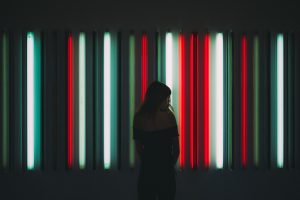
What?
Law 12 class:
Student-“Thank God I deleted that old photo of myself doing …………..!”.
Me- “Did you?”
Student- “ Yup, after we talked in class about the use of peoples social media (SM) accounts as tools for future employers, school admin, ETC to look us up, and how our data is sold, I cleaned up my Facebook and Instagram”
Me- “Good start, did you increase your privacy settings?”
Student- “Yes”.
Me- “Good, now did you look at the tag setting for your photos?”
Student- “ Yup, set those as well”.
Me- “Wait a minute, you didn’t mention cleaning up your SnapChat?”
Student- “I don’t need to, it disappears after 10 seconds.”
Me- “Sit down and let’s talk about data-permanency.”
So What?
How do we make that connection with cell phones and not only their addictive potential but the data-proliferation and ownership of your data? Phones and tech are a great tool that has reinvented and will continue to reinvent, the way we process and disseminate information. We should not fear this. That would be counter-productive. How do we embrace this in an informed manner? We should teach it!
Now What?
The new curriculum does lay-out how to teach media literacy. I have looked it over and it is good. Nieve but good. It is my opinion that teaching the students about what implications their digital footprint may have on their lives has to be more organic. It needs to be more conversation-based, tied to a real-life scenario that is happening. In the Law class mentioned above, we were talking about the suicide cases in the east and the contributions of SM in those cases in terms of bullying ETC. We talked about whether someone should be responsible for the results of their online behaviour and they said yes. I asked if there should be laws in place to make you responsible for that behaviour, and they paused. I asked if an employer should be able to make employment decisions based on their SM information and they said no. I then asked them how they believed what happens online does not correlate with who they really are? They said social media is the place that they can be who they are at the moment, but maybe not who they actually are. That led to a great conversation about intent and privacy that lasted 40 minutes. It was all organic and non-lecture based. Just a conversation in a place where they were safe to express themselves and their thoughts. That, in my opinion, is how we teach digital footprints and SM. We talk about it. We talk about the value it has on our planet and in our lives. We talk about its benefits without ignoring its drawbacks. We talk about our responsibility in societies both outside, and on the web.
By: Andrew Vogelsang
EDCI 569#3-Different Worlds: The Distance Education Experience from a Classroom Teacher.

Photo by Lena Bell on Unsplash
What:
This week’s class discussion was widely based on Online Learning. With the advent of the internet and the proliferation of access to information and knowledge, distance education was a clear next step in the genesis of education or at least a viable option. For the purpose of this blog, I am going to call it Distance Learning (DE). According to an article by Ní Shé, Farrell, Brunton, Costello, Donlon, Trevaskis, Eccles, they say that, “[t]oday many providers of distance education have become fully online where all teaching and learning materials are made available to students online, generally via the institutions Virtual Learning Environment (VLE)” (2019, p 18). Though the article is based on findings for university and higher education settings, I believe there is transferability. DE affords the option for parents to school their children, or have their students educated, in their home for a variety of reasons, be it health (both physical or mental), values, or proximity to a physical building. There are those who are weary DE, those who say that it is robbing the student of the valuable social aspects a public school provides. Others will counter with the schools cannot protect the values that the students’ families want them to be raised with. Both are valid points. But if we are going to talk about the efficacy of DE, we must look at the technology involved and what makes a good DE Teacher.
I work for a school district with a thriving DE program. It is called E-Bus. E-Bus has been operating for 25 years and has an enrolment of approximately 4500-5000 students (from around BC and beyond, with about 1000 being full time enrolled (FTE). The numbers are hard to calculate exactly as they have students taking one course while enrolled at another school, or just one course to reach graduation. In DE, the numbers always fluctuate. Beyond the numbers, there is a massive amount of technology involved, both by the school, and the student, to make this enterprise work.
So What:
I had a sit-down, well… a stand in the hall, chat with a teacher from E-Bus, and I asked him some questions about his job, and the tech they use to deliver their courses. Though this teacher is in my school and I see him every day, I have very little knowledge of his daily routines, as I am sure is common in schools that have DE teachers. We are in different worlds, even though we share a physical building. We had a fantastic talk that was enlightening.
First of all, this teacher suffers from a chronic physical ailment and teaching at E-Bus allows him the flexible hours that will fit his schedule. He is always in on the weekend and works his hours, just not in an 8-4, 5 day a week fashion. This is fantastic accommodation that DE affords. If we are to be inclusive to all students, which we should be, then we have to be inclusive to all workers if possible.
Secondly, his workload is interesting. I have asked many E-Bus teachers about how many students they teach at a given time. As you can imagine, with the fluctuation in course starts and finishes, that number changes often. As I understand it, the teachers in elementary have 25 families they look after and give education to in all disciplines. High school teachers can have as many as 200+ students at a time. As a classroom teacher, I find that number to be astonishing and in a classroom that would be 50 per class. However, DE is different in a way, as this teacher explains. He says that there are self-starters who he never really has to interact with as they complete their assignments without prodding and can fly through the course. However, there are students that may take 2 years to finish a course, and DE allows for that flexibility too. I cannot speak to whether this number of students is manageable, as I have never taught DE. Furthermore, with a lack of provincial class size limits for DE, the point is moot anyway. So how does the learning happen? How are all reached? Tech.
E-Bus runs off Moodle. Moodle is a Learning Management System (LMS) and it is open source. Through Moodle, the units are delivered. They also rely on Office 365 from Microsoft to deliver all their software needs through an online platform (cloud-based) and therefore not requiring the students to have the software on their physical computer. They also use a video recorder/editor called Camtasia. Though Social Media Platforms, like Facebook, are a viable way to communicate with students, it is frowned upon as it is a great way to get viruses, along with other confidentiality issues. The tech is allowing for the potential of a good online experience for the students and the teachers. But is it different being a teacher online vs. a regular school?
Now What:
To the question of DE and in school education being different, I would say it clearly is. However, the skills required to be a good teacher in this platform seem to match up well with regular schools. According to Ni She et al., the main factors important to successful online teaching are: presence, facilitation and supporting students (p34). When one looks at the descriptions of these (Table 10, p34) it discusses all the things that are effective in OE, but they are the same as good teaching in a classroom. Words like support, facilitation, presence, timely feedback, ETC. all play a role as an educator no matter the venue. I feel that I, and others, tend to try to differentiate what something is based on its mode of delivery. Yes, they are different, but the ideals are the same: Education. There are ways to create a tie between DE and conventual education through technology.
Overall, I was truly ignorant of the daily duties of a colleague that works in the same building as myself. We are together but in different worlds. There is a lot that I can learn from him as to how to incorporate the software he uses in my classroom. This has been a fantastic week of learning, and growth, and I am better for it.
By: Andrew Vogelsang
References
Shé Ní, C., Farrell, O., Brunton, J., Costello, E., Donlon, E., Trevaskis, S., & Eccles, S. (2019). Teaching online is different: Critical perspectives from the literature. Retrieved from Dublin City University website: https://openteach.ie/wp-content/uploads/2019/11/Teaching-online-is-different.pdf
EDCI 569 #2- OERs-An Emerging Trend
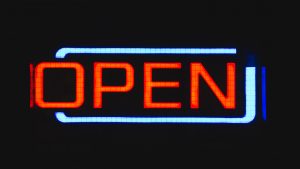
Photo by Alex Holyoake on Unsplash
What:
In this week’s readings and classroom discussions, we discussed the use of Open Education Resources (OER). In my opinion, the largest and most impactful OER to date is and will be for a long while, YouTube. According to the United Nations, Scientific and Cultural Organization (UNESCO), “Open Educational Resources (OER) are teaching, learning and research materials in any medium – digital or otherwise – that reside in the public domain or have been released under an open license that permits no-cost access, use, adaptation and redistribution by others with no or limited restrictions” (Downes, 2019). OER’s are a fantastic emerging phenomenon in the educational field. In teacher’s college, they emphasize the importance of sharing resources, and to make sure we try not to, “reinvent the wheel”. That is a very important tip as the sheer workload commitments on new teachers, and teachers in general, are immense. Therefore, it is great to see sites like Teachers Pay Teachers, and the BC OpenEd, where teachers can help one another move forward in their field. OERs are also growing in the Post-Secondary field with places like MIT OpenCourseWare as an example. These sites allow me to get ideas that are from people in my field. As the only computer teacher in my school, I find collaboration with others hard as they, most of the time, have little idea of what I am talking about. That is in no way a slight on them, they just don’t teach computers. I have reached out and discussed many ways of teaching software, or units, with the Tech Teachers in my district and that has been helpful, however, we all have such different teaching styles that sometimes it is more work to change their ideas to fit my classroom than to just do it myself. OERs are opening up many doors for both my students and myself as a life long learner.
So What:
Being able to find resources that are specific enough for the students in my class is a challenge. Having split away from the traditional stand-and-deliver pedagogy for the grade 9-12 students in my class and switching more to a passion-driven independent style of learning has been amazing for engagement, but hard for resources. I, at any time, have 10+ different software programs going in my room and that requires some quick resources I can find that the student can use to move forward. I have one student using AutoDesk Fusion, an immensely complicated piece of software that he wants to learn to help him understand and work towards his goal of being an engineer. I was able to get educational copies of this software and he is creating amazing things. That is more on him, as this is his passion, I just had to get him started and get out of his way. But where does he get the information to learn this software? OER. This student went on the software website, spent an hour finding the tutorial he wanted and started making the product. His work on Fusion has inspired another student, who wants to learn AutoCAD like his father. The benefits are great and the learning intense. This process has been many hours scouring YouTube and other online forums to get the information to the students. However, due to these class readings, I was introduced to MIT OpenCourseWare which is a blessing to those who teach programming.
What Now:
MIT OpenCourseWare is a tool I would have never thought about, or heard of, if not for this course. It has changed my expectations, and understanding, as to what OERs could be. This is mostly due to my ignorance of the platforms and their uses. I have a student that is learning Python (programming language) and has had some good resources to aid him in that. However, there is a Python training course, with full lectures and class script and learning modules on the MIT site. Also, the Directory of Open Academic Journals (DOAJ) has been very helpful to my Senior Humanities students when they are looking for research on their various courses, be it Philosophy, Psychology, Comparative Religions, ETC. These sites are a game-changer for me and my students. Furthermore, I have a student designing assets (3D models) for her house in Google Sketch-up. She has decided she wanted others to use her work so she uploaded her asset to the 3D Warehouse for others to use, free of charge, which is adding to the repository of assets available to those who use the program.
I know the examples above are small samples of what can be done, however the willingness to share with others is the greatest part for me to witness. This group of learners, and this generation, is less interested in ownership than they are of getting their stuff out there and, possibly, helping others. It is this idea of sharing that may change the monetization of resources in future generations.
Reference
Downes, S. (2019). A Look at the Future of Open Educational Resources. International Journal of Open Educational Resources, 1(2). Retrieved from https://www.ijoer.org/a-look-at-the-future-of-open-educational-resources/

